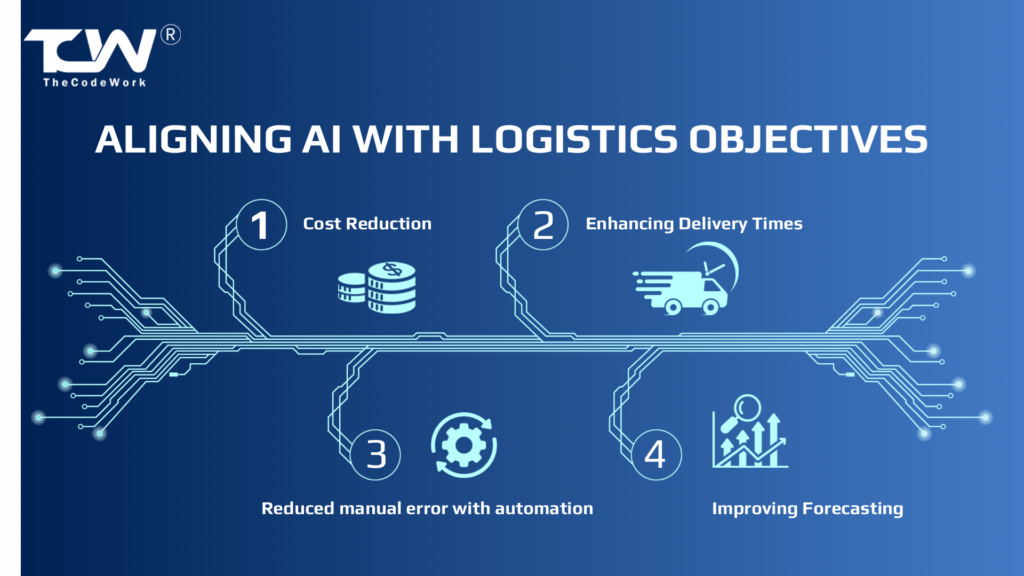Undoubtedly, we all envision a future where products reach consumers, with great speed, fewer delays and reduced carbon footprints. Now, it is not just a dream anymore—Its the future of logistics that we are shaping with AI (Artificial Intelligence). If we crack the bit about aligning AI with logistics objectives, we can surely reach there.
With globalization and the pressure to meet customer expectations, AI is stepping-in with high force to address significant logistics and supply-chain objectives.
Understanding Logistics Objectives
Likewise, to align AI strategies effectively with your logistics requirements, it’s highly necessary to understand your primary goals:
- Efficiency: Logistics teams must aim to reduce operational costs and improve delivery speed.
- Scalability: As market demands keep fluctuating, businesses must leverage demand forecasting to adapt seamlessly during seasonal peaks or rapid expansions.
- Sustainability: Also, businesses should focus on reducing their carbon footprints, balancing green initiatives with their performance metrics.
Key AI Technologies in Logistics
In addition, several AI technologies are transforming logistics through improved prediction, automation, and customer engagement.
- Machine Learning (ML): By analyzing historical data, ML models can easily forecast demands and optimize delivery routes accordingly.
- Robotic Process Automation (RPA): Automates repetitive tasks like data entry, order processing, and inventory management, to focus on higher-value activities.
- Computer Vision: Improves inventory tracking, quality control, and package sorting, while ensuring accuracy throughout the logistics process.
- Natural Language Processing (NLP): Also, it enhances customer services by providing real-time updates on packages with AI powered chatbots and virtual assistants.
Aligning AI with Logistics Objectives

Besides, in order to fully utilize the AI’s potential, logistics companies must strategically align AI applications with their core objectives:
- Cost Reduction through Automation: Likewise, AI-powered automation minimizes the need for manual tasks, reducing human error and lowering overhead costs.
- Enhancing Delivery Times: Moreover, AI accurately predicts potential delays and dynamically adjust routes, allowing faster and more efficient deliveries.
- Improving Forecasting: Through historical analysis of demand trends, AI allows companies to maintain optimal inventory levels and avoid stock outs or surplus.
Future Trends
As logistics businesses continues to embrace advanced technologies, AI is set to expand its horizon further:
- Real-Time Shipment Tracking: Likewise, enhanced AI algorithms will offer more accurate, real-time tracking for shipments, improving visibility extensively.
- Sustainability Insights: Also, AI will greatly aid in monitoring and reducing carbon footprint by optimizing routes and minimizing energy usages.
- Autonomous Vehicles and Drones: Moreover, the integration of AI in autonomous vehicles and drones will transform last mile deliveries greatly.
FAQs
Q1. What is RPA, and how does it support logistics?
Ans: Robotic Process Automation (RPA) automates repetitive administrative tasks, like data entry and order processing. As a result, it reduces the time spent on these activities, improves accuracy, and allows employees to focus on strategic tasks.
Q2. What are the cost implications of implementing AI in logistics?
Ans: While the initial investment in AI implementations can be significant, butAI-driven automation and optimization leads to long-term savings. Therefore, companies should evaluate the ROI over time in order to justify the investment.